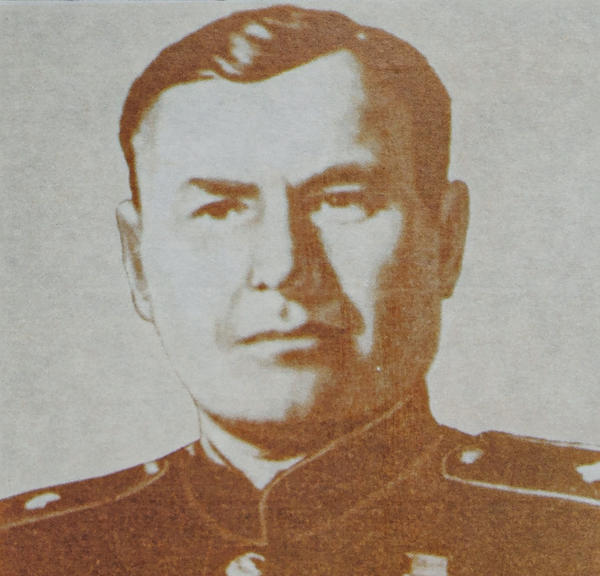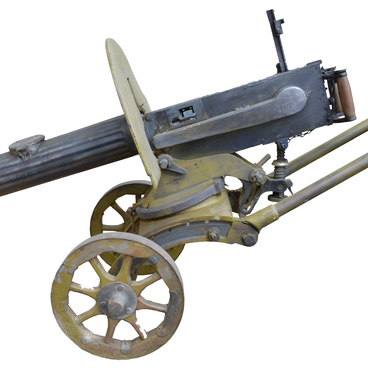Grigory A. Belov came from the small village of Sara in the Alatyr district of the Simbirsk Governorship (the Surskoye district of the Ulyanovsk Region today). He was born on 12 October 1901 into a Russian peasant family. He only attended a primary school as a boy in his village, and, still a child, started to work for a merchant enterprise as a barge sailor. In 1918, he moved to Samara and found work at the wharf as a stevedore.
April 1920 became a turning point for Belov – he volunteered to join the Red Army. At the same time, he completed successfully a party-run course and joined the service as a political commissar. He fought against Nestor Makhno’s units, the White Army commanded by Pyotr Wrangel, and gangsters and rebels in the North Caucasus and Kyban.
Later Belov moved to the city of Tver where in 1927 he graduated from the military school, followed by the Military Political Academy in 1930. In 1937 he spent a year in Mongolia, offering instruction to the local revolutionary people’s army, and eventually returned to the Soviet Union, where he had a successful teaching career.
By the start of the war Belov was a colonel and teaching at the Frunze Military Academy. In autumn 1941 he was commanding a regiment in Kovrov. He joined the forces at the front in July 1942 as a second in command of the 112nd Bashkir-Caucasian Division, later to become the 16th Guards Division.
The division was led by Major General Minigali Sh. Shaimuratov. The cavalry played an important role in the defensive battles fought over Voroshilovgrad, Voronezh and Bryansk. When Shaimuratov died a hero’s death on 23 February 1943, Grigory Belov took over the command.
Later, Belov, as a Major General, conducted a number of successful operations with his cavalry units, including Gomel-Rechitsy, Kalinkovichi-Mozyr, Belorussian, Vistula-Oder and Berlin offensives. Belov’s division was mentioned repeatedly by Josef Stalin for their brilliant handling of the battles.
The war for the 16th Guards Division ended on 7 May 1945, and the victory found its soldiers on the banks of the Elba River. Grigory Belov participated in the legendary Victory Parade in Moscow where he led a joint cavalry squadron.
Belov stayed in the army service after the end of WWII. He was, over the years, an adviser to China’s People’s Liberation army, and a member of the Uzbek Republic’s Supreme Council. He resigned in 1962.
Grigory Belov spent his last years in Moscow and died on 23 June 1994.
April 1920 became a turning point for Belov – he volunteered to join the Red Army. At the same time, he completed successfully a party-run course and joined the service as a political commissar. He fought against Nestor Makhno’s units, the White Army commanded by Pyotr Wrangel, and gangsters and rebels in the North Caucasus and Kyban.
Later Belov moved to the city of Tver where in 1927 he graduated from the military school, followed by the Military Political Academy in 1930. In 1937 he spent a year in Mongolia, offering instruction to the local revolutionary people’s army, and eventually returned to the Soviet Union, where he had a successful teaching career.
By the start of the war Belov was a colonel and teaching at the Frunze Military Academy. In autumn 1941 he was commanding a regiment in Kovrov. He joined the forces at the front in July 1942 as a second in command of the 112nd Bashkir-Caucasian Division, later to become the 16th Guards Division.
The division was led by Major General Minigali Sh. Shaimuratov. The cavalry played an important role in the defensive battles fought over Voroshilovgrad, Voronezh and Bryansk. When Shaimuratov died a hero’s death on 23 February 1943, Grigory Belov took over the command.
Later, Belov, as a Major General, conducted a number of successful operations with his cavalry units, including Gomel-Rechitsy, Kalinkovichi-Mozyr, Belorussian, Vistula-Oder and Berlin offensives. Belov’s division was mentioned repeatedly by Josef Stalin for their brilliant handling of the battles.
The war for the 16th Guards Division ended on 7 May 1945, and the victory found its soldiers on the banks of the Elba River. Grigory Belov participated in the legendary Victory Parade in Moscow where he led a joint cavalry squadron.
Belov stayed in the army service after the end of WWII. He was, over the years, an adviser to China’s People’s Liberation army, and a member of the Uzbek Republic’s Supreme Council. He resigned in 1962.
Grigory Belov spent his last years in Moscow and died on 23 June 1994.



